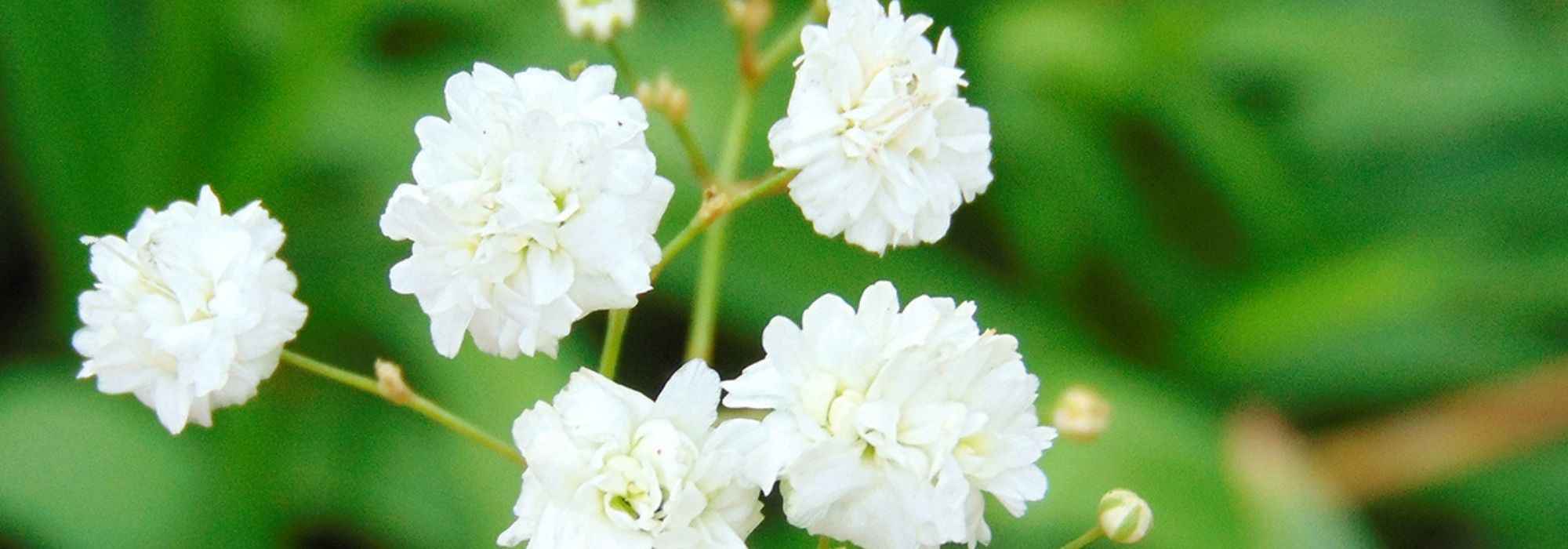
Pairing Gypsophila: 7 Ideas to Inspire You
Elegant compositions
Contents
With its small clouds of tiny white or pink flowers, gypsophila is often used in bouquets for its touch of lightness. It pairs well with all kinds of flowers and is an essential companion to roses. In a garden, gypsophila allows for the creation of a myriad of very different displays and arrangements. Easy to grow, gypsophila simply requires sunlight, as well as dry, well-drained soil. At the foot of roses, in a rockery, in a Mediterranean garden, in a bed of colourful flowers, in pots, or in a flowering meadow, gypsophila offers numerous possibilities.
Discover our 7 pairing ideas with gypsophila to create a romantic atmosphere!
With roses
Classic, elegant, and essential, gypsophila pairs wonderfully with roses in bouquets. Recreate this combination in your garden by planting gypsophila near your favourite roses. As gypsophila blooms from June to August, you can pair them with both repeat flowering and non-repeat flowering roses. To ensure success, make sure the gypsophila are well exposed to sunlight and planted in well-drained soil.
For example, you can combine colours to create contrasts. Plant Gypsophila repens ‘Alba’ at the foot of a brightly coloured rose, such as the polyantha rose ‘Charmant’.
If you prefer to play with soft tonal gradients, create harmonies. For example, combine pink gypsophila, such as Gypsophila ‘Rosenschleier’, with tender pink roses, like the rose ‘The Fairy’.
Angélique’s tip: choose the variety of gypsophila based on the size of the rose and pair creeping gypsophila with dwarf or groundcover roses. Reserve the paniculate gypsophila, which can grow up to 1 metre, to plant alongside a climbing rose on a wall or arch, such as the rose ‘Pierre de Ronsard’.

Gypsophila ‘Rosenschleier’, Rosa ‘The Fairy’ and Rosa ‘Larissa’
Read also
Gypsophile: planting and careIn a rockery
Gypsophila thrives in the stony soils of the Alps and the Mediterranean Basin or Central Asia. It prefers dry, calcareous soils, making it the quintessential rock garden plant. Use its lightness in your mineral displays!
Install your rockery in full sun, and if you choose small plants, opt for creeping species like Gypsophila repens at 20 cm or Gypsophila cerastioides at 10 cm, to maintain the harmony of the composition. You can also play with height contrasts by planting taller gypsophilas like Gypsophila paniculata, which can reach 1 metre.
Among rock garden plants, combine Gypsophila repens ‘Alba’, for example, with campanulas that offer a wide range of colours, from purple to pink. You can also combine gypsophilas with brightly coloured phlox, such as Phlox douglasii ‘Waterloo’, or softer tones like Phlox douglasii ‘Lilac Cloud’. Carnations, such as Dianthus carthusanorum, also look stunning in a rockery and pair beautifully with gypsophila.
Discover in this article How to create a rockery.

Dianthus carthusianorum, Gypsophila repens ‘Alba’, Campanula portenschlagiana, and Phlox douglasii ‘Waterloo’
Discover other Gypsophila
View all →Available in 0 sizes
Available in 2 sizes
Available in 1 sizes
Available in 1 sizes
Available in 1 sizes
Available in 1 sizes
Available in 1 sizes
Available in 2 sizes
Available in 1 sizes
Available in 1 sizes
In a Mediterranean garden
Perfect plant for dry and stony soils, gypsophila can be easily inserted into a Mediterranean garden. You can thus pair it with lavenders, sages, cistus, and decorative garlic. Also consider oleanders, pomegranates, olives, and agaves to enhance the Mediterranean feel of your garden.
You can also draw from Mediterranean aromatic plants, such as thyme and rosemary, which will additionally fragrance your garden.
Discover in this article the iconic plants of a Mediterranean garden.
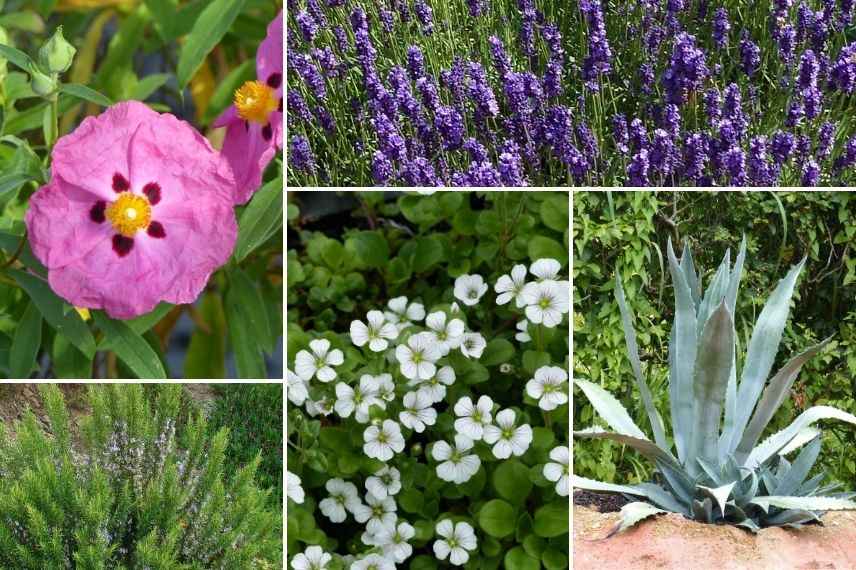
Cistus purpureus, Lavandula angustifolia ‘Hidcote’, Rosmarinus officinalis, Gypsophila cerastioides, Agave americana
Read also
Growing gypsophila in potsTo add lightness and brighten a flower bed
In borders, gypsophila reveals the beauty of larger flowers such as cosmos, carnations, or agapanthus. Just ensure that the flowering periods coincide well among the different flowers for a successful combination.
To enhance the effect of lightness, you can complement the border with other equally airy plants, such as gauras or grasses, thus varying the shapes and colours.
The white or even light pink colours of gypsophila pair beautifully with darker flowers to make them more vibrant. Try combining white gypsophila with purple coneflowers, blue lavender, and white Sparkler cleomes at the back of the borders. The result can be stunning.
Another option is to create a colour gradient in blue, mauve, and white. Consider, for example, pairing white gypsophila with mauve asters like Asters amellus ‘Sonora’, nepeta, and ‘Black Adder’ agastaches, to place at the back of the border.

Gypsophila paniculata ‘Bristol Fairy’, Aster amellus ‘Sonora’, Agastache foeniculum ‘Black Adder’, and Nepeta kubanica
To enhance borders or a low wall
For your borders, gypsophila is perfect as it adds a delicate and elegant touch to your garden. You can pair it with hardy geraniums or nepeta to bring a splash of colour to your borders.
If you are lucky enough to have a low wall in your garden, plant a gypsophila in a gap of soil. Not very thirsty, the plant enjoys this type of spot as long as there is enough soil and it is sunny. In the company of campanulas, which also like to nestle between stones, your wall will instantly become much more charming.
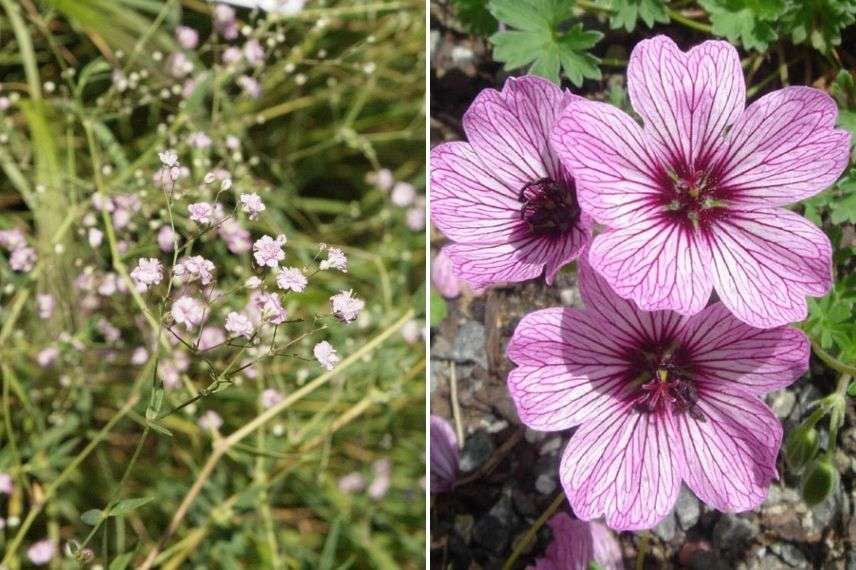
Gypsophila paniculata ‘Flamingo’ and Geranium cinereum ‘Ballerina’ (photo Wikipedia)
In a flowering pot
Turn to creeping or annual gypsophila, such as Gypsophila repens or elegans, and create chic, rustic floral arrangements by pairing them with pelargoniums, campanulas, cosmos, or petunias.
Once again, you can play with colour contrasts, combining white with blue, pink, or purple, or explore shades of the same hue. The lightness of gypsophila enhances the beauty of larger flowers in corolla or cluster form, allowing for interesting shapes.
To create your floral arrangements, choose a pot that is at least 50 cm in diameter and sufficiently deep.

Gypsophila repens ‘Rosa Schönheit’, Pelargonium zonale, and Petunia ‘Sugar Plum’
To create a flower meadow
If you love natural gardens, you can also create a light and airy flower meadow by sowing gypsophila directly in the ground. Choose a sunny location and light, well-drained soil. If your soil is too heavy or clayey, add sand to lighten it. Sow in March or April by scattering seeds to achieve a beautiful flower meadow from June to August.
You can enhance the flower meadow with many other wildflowers and plants that will bring different shapes and numerous colours. You can also plant for example poppies, cornflowers, Caucasian scabious, and cosmos. A lovely idea to attract butterflies!
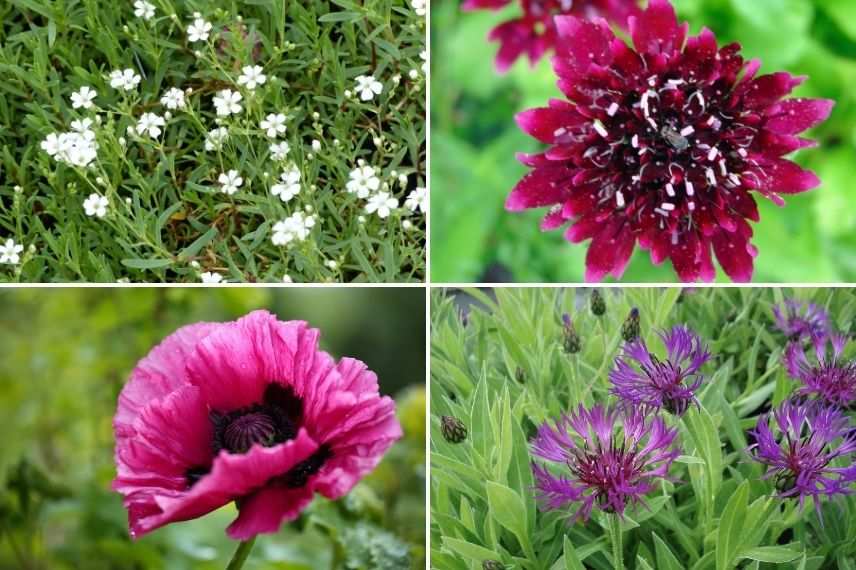
Gypsophila repens ‘Alba’, Scabiosa ‘Chile Black’, Papaver ‘Patty’s Plum (photo Alexandre Dulaunoy) and Centaurea montana ‘Violetta’,
- Subscribe!
- Contents
































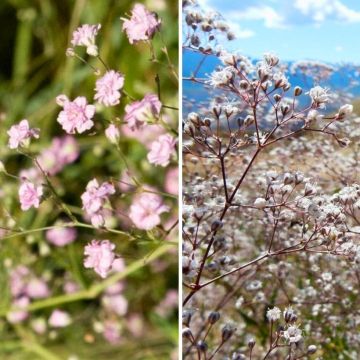

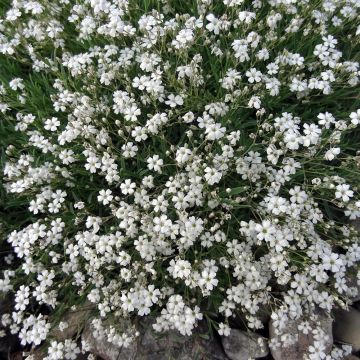


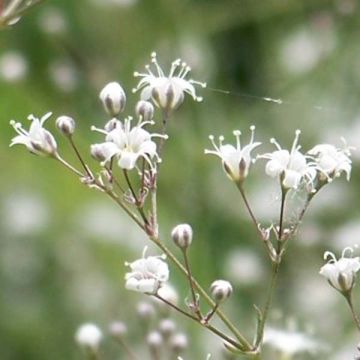

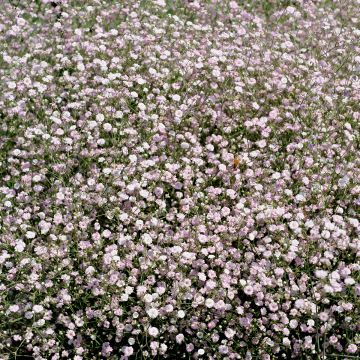
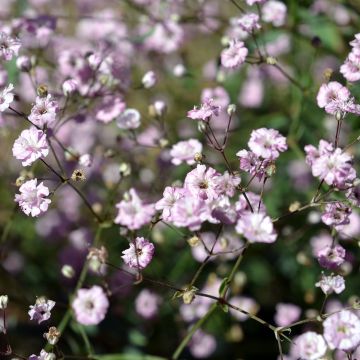

Comments